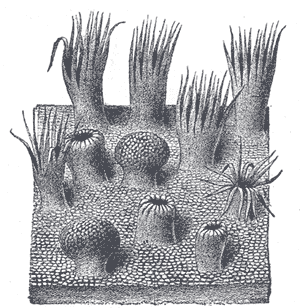 Sweetness
Sweetness"Sweet is one of the five basic tastes and is almost universally regarded as a pleasurable experience. Foods rich in simple carbohydrates such as sugar are those most commonly associated with sweetness, although there are other natural and artificial compounds that are much sweeter, some of which have been used as sugar substitutes for those with a sweet tooth. Other compounds may alter perception of sweetness itself.
The chemosensory basis for detecting sweetness, which varies among both individuals and species, has only been teased apart in recent years. The current theoretical model is the multipoint attachment theory, which involves multiple binding sites between sweetness receptor and the sweet substance itself.
Examples of sweet substances
A great diversity of chemical compounds, such as aldehydes and ketones are sweet. Among common biological substances, all of the simple carbohydrates are sweet to at least some degree. Sucrose (table sugar) is the prototypical example of a sweet substance, although another sugar, fructose, is somewhat sweeter. Some of the amino acids are mildly sweet: alanine, glycine, and serine are the sweetest. Some other amino acids are perceived as both sweet and bitter.
A number of plant species produce glycosides that are many times sweeter than sugar. The most well-known example is glycyrrhizin, the sweet component of licorice root, which is about 30 times sweeter than sucrose. Another commercially important example is stevioside, from the South American shrub Stevia rebaudiana. It is roughly 250 times sweeter than sucrose. Another class of potent natural sweeteners are the sweet proteins such as thaumatin, found in the West African katemfe fruit. Hen egg lysozyme, an antibiotic protein found in chicken eggs, is also sweet.
Interesting facts about the sweetness receptor
Sweetness perception may differ between species significantly. For example, even amongst the primates sweetness is quite variable. New World monkeys do not find aspartame sweet, while Old World monkeys, apes and humans all do.[8] Felidae like cats cannot perceive sweetness at all."
-(http://en.wikipedia.org/wiki/Sweetness)
My Resolution
I'm afraid that I may have to go another year, at least, without sugar. No more donut dreams for this girl! I simply can not justify going back onto sugar. If I did, it would be for all of the wrong reasons.
No comments:
Post a Comment